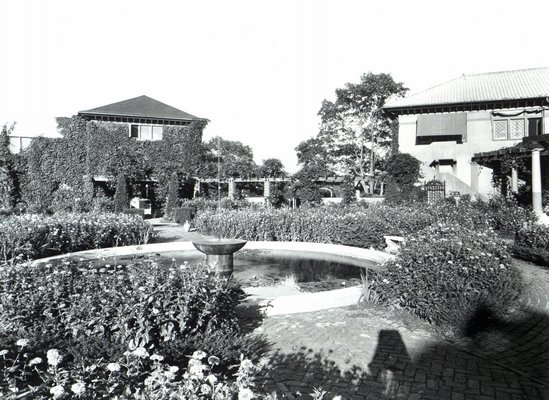
The final details that will complete billionaire investor Ron Perelman’s attempt to bring his nearly 58-acre estate on Georgica Pond into conformity will be discussed Friday by the East Hampton Village Zoning Board of Appeals.
Of the numerous zoning code violations that took village officials six years to retroactively approve or order changes to, for a slew of construction and expansion projects that were illegally done at “The Creeks” estate, all that remains is one: lighting for garden sculptures.
The final determination made by the ZBA on May 8 dictated that “the artwork shall not be lit”—and Leonard Ackerman, one of Mr. Perelman’s attorneys, will argue that the issue was not openly discussed at an April hearing.
“The artwork currently is lit,” Mr. Ackerman said ahead of the hearing, adding that Mr. Perelman wants to keep the artwork displayed at night “the way it has been for the last few years.”
The estate, which was purchased by Mr. Perelman in 1993 for $12.5 million from Ted Dragon, is a legendary Mediterranean villa built by Grosvenor Atterbury, who designed the former Parrish Art Museum in Southampton Village. It had been the home of artist Alfonso Ossorio, Mr. Dragon’s partner.
The mansion has hosted gatherings of many artists, such as Lee Krasner, Mark Rothko, Grace Hartigan and Jackson Pollock—each leaving their mark on estate’s sweeping grounds with numerous sculptures and other artworks.
After firefighters responded to a call in 2012, the village became aware of dozens of illegally constructed and expanded structures at “The Creeks” that environmental experts warned would have negative effects on Georgica Pond and the surrounding wetlands.
The ZBA’s final determination in May was a fair compromise given Mr. Perelman’s desires and the needs of the local environment, said Frank Newbold, the board’s chairman. He said the board had held four lengthy hearings to discuss the necessary variances required, and that, at the end of the day, neither he, nor the rest of the board, could condone any building without the proper permits.
“I think we reached a fair determination that balanced the variances granted against the extensive mitigation that was offered specifically that had to do with the health of Georgica Pond,” Mr. Newbold said.
The mitigation that would benefit the pond included upgrading septic systems with state-of-the-art denitrifying systems for every property; enforcing a 150-foot wetlands buffer zone around the property; and revegetating areas without any pesticides or fertilizers that had been unlawfully cleared.
The lion’s share of the variance changes scaled back additions to multiple dwellings on the estate. Mr. Perelman was instructed to reduce the second floor of an expanded 4,142-square-foot carriage house—six bedrooms, appliances, partitioning walls, finishes, fixtures, heating and insulation—to studs. Now, the second floor can be used only as storage space.
A 5,802-square-foot living facility, complete with its own kitchen, was approved, too, as long as it had no more than three bedrooms. An indoor shower is to be removed from the pool house. A 317-square-foot tent is to remain on the property, but Mr. Perelman’s 795-square-foot accessory workout building will be scaled back to its original 575 square feet.
And the expansion of a private synagogue, which Mr. Perelman has eyed for faith education, was green-lit, from 757 square feet to 1,275 square feet for three rooms and additional two powder rooms. Accessory buildings, under village code, are typically granted one room, and the height is capped at 14 feet; the faith center was allowed to remain at 15.1 feet.
At the request of Mr. Perelman, the hearing will reconvene to discuss nothing more than the light fixtures for the six artworks and sculptures approved for the rear yard—and nothing else.
“[We] will review just that one limited item—period, end of story” Mr. Newbold said, with a deep breath after reflecting on the six-year process.”